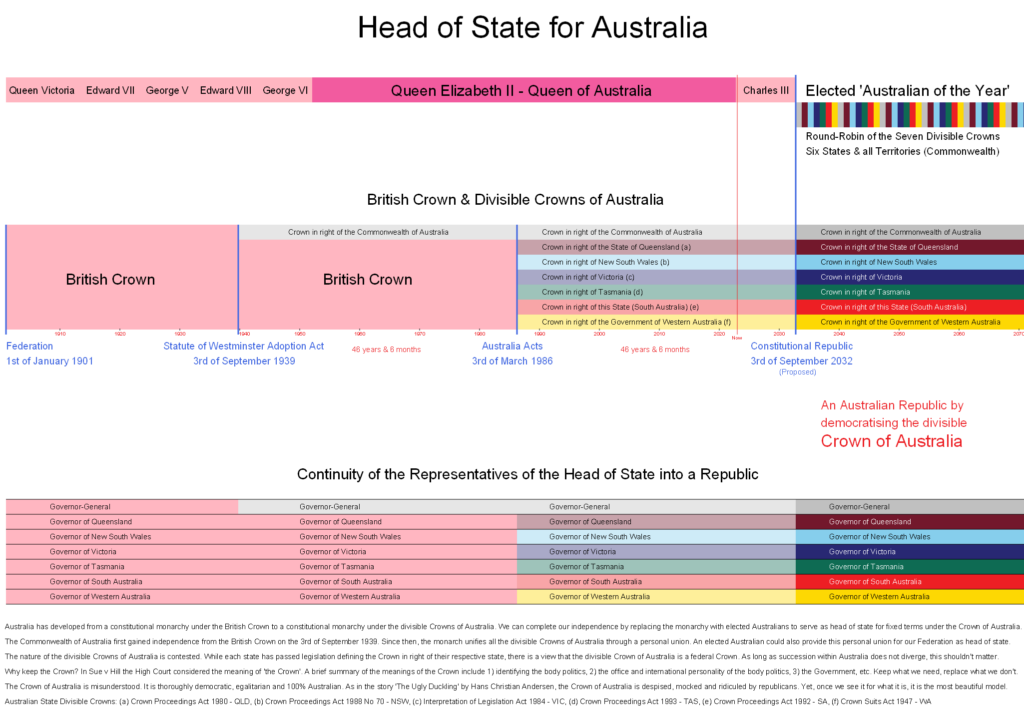
https://7gs.au/wp-content/uploads/2023/08/time_line_main2.png
The “Ugly Duckling” Model for an Australian Republic proposes a unique approach to democratizing the divisible Crowns of Australia, which are presently monarchical and hereditary in nature. Drawing inspiration from the fairy-tale of the same name, this model likens the Crown of Australia to an “Ugly Duckling” – misunderstood and lacking the democratic image they could embody. The central idea is to retain these Crowns while replacing the monarch with elected Australian representatives who serve fixed terms as heads of State.
In this model, the existing divisible Crowns, representing Australia’s states and the Commonwealth, would undergo a transformation to become truly democratic entities. Currently non-democratic and hard to envision as democratic, these Crowns would be reimagined as symbols of inclusivity and popular choice. By electing Australians to hold ceremonial office under these divisible Crowns, the model seeks to bridge the gap between the existing monarchical structure and a more democratic vision for the future.
The proposal ensures that the Governor-General and State Governors, as representatives of the elected head of State, retain their roles, and the concept of reserve powers continues. This maintains the balance of power and prevents the elected head of State from becoming a political rival to the Prime Minister. The model’s emphasis on short terms and apolitical campaigns further ensures the ceremonial nature of the role.
In essence, the “Ugly Duckling” Model strives to redefine the divisible Crowns of Australia by infusing them with democratic principles. By electing representatives to these Crowns while preserving their ceremonial functions, the model seeks to create a harmonious blend of tradition and modern democracy in the Australian context.
Here is a summarized version of the model for a republic, along with the benefits and objections associated with it:
Model Summary:
Benefits:
Objections:
Overall:
Here is a summarized version of the path to a republic outlined in the text:
In summary, the path to an Australian republic involves consultation, harmonization of terminology, preventing divergence, a Constitutional Convention, testing the election process, using existing platforms for campaigns, formalizing rules, holding a referendum, safeguarding against secession, requesting international changes, and symbolically transferring sovereignty. The goal is to transition to a republic while maintaining unity and preserving Australia’s democratic values and system.
Here’s a summarized version of the proposed model for an Australian republic:
In essence, this proposed model outlines the transformation from a constitutional monarchy to a republic by electing an Australian head of state while preserving key aspects of the existing constitutional structure.